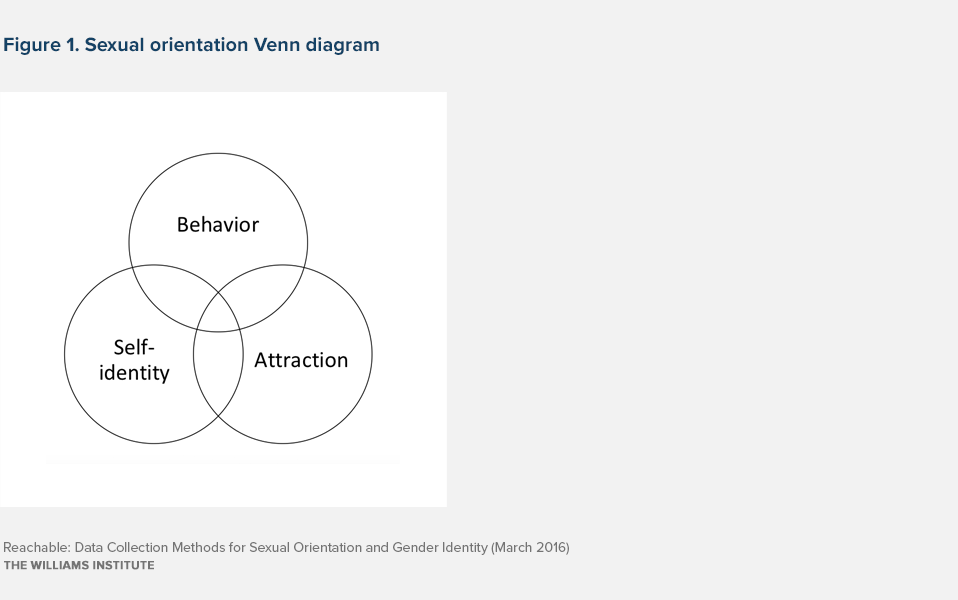Introduction
In the past few years, researchers have begun developing new methods to measure sexual orientation and gender identity. Sexual and gender minorities have often been classified as “hard-to-reach” populations. However, recent developments in data collection methods demonstrate the increasing number of research methodologies available to those seeking a greater understanding of the lived realities of sexual and gender minorities. This report highlights some examples of data collection methods and presents examples of their use around the world.
The audience for this paper is non-researchers who seek a basic understanding of data collection methods regarding sexual orientation and gender identity. This paper is not a review of data collection. Rather it provides a small number of examples of data collection efforts.
The Need for Data Collection
The United Nations Secretary General Ban Ki-Moon recognized the relationship between data and decision-making when he observed that “[g]ood data and statistics are indispensable for informed decision-making by all actors in society.” Policymakers and advocates often operate without reliable information about important aspects of the lives of sexual and gender minorities, including socioeconomic status, educational attainment, patterns of exclusion from employment, information about physical and mental health, ability to participate in civic institutions, and other development outcomes. Increasing this level of available data about sexual and gender minorities would help improve the quality and effectiveness of public policy.
Until recently, there has been very little quantitative research about the lived experiences of sexual and gender minorities in most parts of the world. Researchers in Asia, Latin America, and sub-Saharan African have noted that, until the last few years, research on sexual orientation has been scarce. Globally, until the mid-1980s, research on homosexuality was scarce and focused on identifying the causes of homosexuality for the purposes of developing prevention initiatives. A scholarly review of the research on identity formation in sexual minorities noted the historically low level of knowledge about the process of identity formation and how it varies across ethnicity, social class, or region or between Western and non-Western societies.” Most research targeting sexual or gender minorities in these regions has been conducted in the context of HIV epidemiological or prevention research and tends to not focus on anything beyond sexual risk involving those assigned male at birth. There is also a general lack of research about people with intersex conditions, and almost all research is in a medical/clinical framework.
Governments and civil society leaders have come to realize that data about sexual and gender minorities is needed for a number of reasons:
- Inclusion of sexual and gender minorities in the sustainable Development Goals and other development priorities.
- Identifying the impact of stigma and prejudice on development outcomes such as income, safety, education, health, family life, violence, migration, etc.
- Identifying the preferences and life-goals of sexual and gender minorities.
- Evaluating the effectiveness of government and civil society programs meant to reach sexual and gender minorities.
- Assessing government efforts to respect, protect and fulfill the human rights of sexual and gender minorities.
Demographic Research
Researchers and governments have begun to consider integrating methodologies to gather data about the demographic characteristics of individuals of diverse sexual orientation, gender identity, and intersex status. As all people have a sexual orientation and a gender identity, these methodologies can be used to collect data about the sexual orientation and gender identity of all members of any given population. Some research has been initiated by adding components about sexual orientation and gender identity to ongoing survey programs, such as national youth surveys or national health surveys. Other research has been undertaken as independent research efforts. Any such research should conform to relevant standards regarding human subject research and should take into account ethical and safety considerations.
Gender Identity and Expression
Researchers are developing new approaches to surveying gender identity and expression. While the choice of methodology depends on a variety of factors including the specific purpose of the research effort, the following examples of data collection approaches serve to illustrate options available to researchers using surveys:
- A two-step approach: Among the most effective is the “two step” approach, which includes measures assigned sex at birth and self-reported gender identity at the time of the survey.
- A single-item approach: The respondent is asked to choose a term that best describes their gender identity.
- Questions to assess gender expression.
These and similar methods have been used to measure gender identity and expression in several regions of the world.
Researchers have also developed methods to respond to challenges involved in data collection about sexual and gender identities which are culturally specific and unique. For example, in 2011, the government of Nepal attempted the world’s first census in which respondents had the option of choosing “Male,” “Female,” or “Third Gender.” The effort was not successful for a number of reasons, among which was that large proportions of the gender minority population did not identify with the term “third gender.” Subsequent research determined that the use of culturally specific terms such as “Methi” and “Kothi” would have increased the effectiveness of the census effort.
Sexual Orientation
Researchers have identified methods to assess the sexual orientation of individuals. Conceptually, sexual orientation has three dimensions, each of which can be measured using a survey:
- Self-identification: how does one identify one’s sexual orientation.
- Sexual behavior: the sex of partners (i.e. individuals of the same sex, different sex, or multiple sexes).
- Sexual attraction: the sex or gender of individuals that someone feels attracted to.
